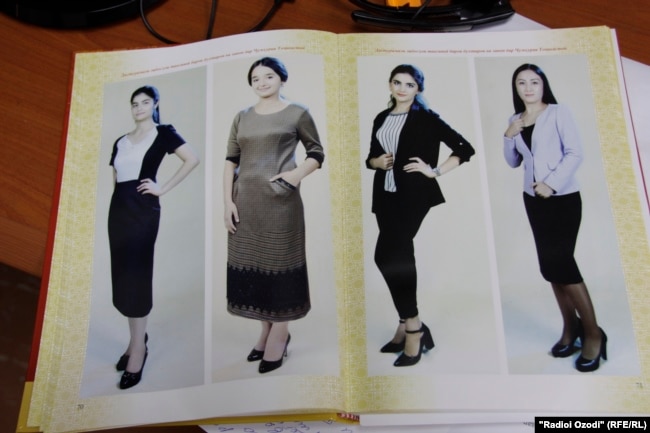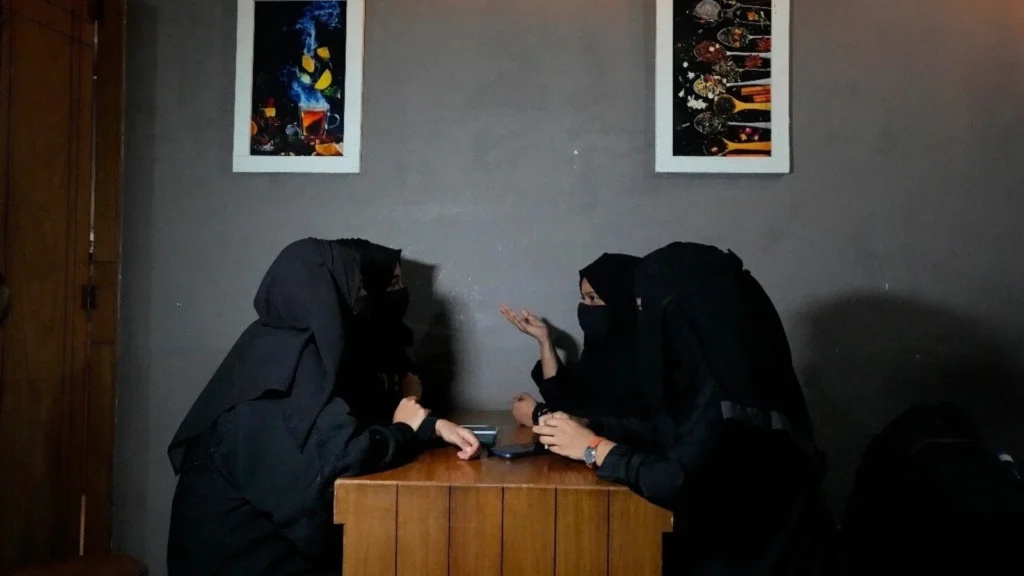After graduating from medical school, Salomat had to settle for working as a masseuse at a Dushanbe beauty salon because hospitals in Tajikistan don’t allow the Islamic hijab, which she wears.
“I had to choose between my career and my faith, and I chose the latter,” says Salomat, who didn’t want to give her full name. “I did remove my hijab in college because I thought that was temporary. But a career is for life.”
Thousands of women in Tajikistan have faced similar choices in recent years as the staunchly secular government in Dushanbe has been increasingly cracking down on the Islamic head scarf at schools and workplaces.
Despite the effective ban on the hijab in public institutions, there is no legislation in Tajikistan that outlaws Islamic attire. But that is about to change.
Parliament in the predominantly Muslim nation of some 10 million has adopted draft amendments to the law on “traditions and celebrations” that will ban the wearing, importing, selling, and advertising of “clothes alien to Tajik culture,” a term widely used by officials to describe Islamic clothing.
Lawmakers also approved new amendments to the code of administrative violations, which includes hefty fines for offenders. The code did not previously list the wearing of a hijab or other religious clothing as violations.
Tajik lawmaker Mavludakhon Mirzoeva told RFE/RL’s Tajik Service that the amended version of the draft bill “includes a ban” on clothes deemed foreign to Tajik culture.
The penalties for offenders vary from the equivalent of $740 for individuals to $5,400 for legal entities. Government officials and religious authorities face much higher fines of $3,700 and $5,060, respectively, if found guilty.
The draft bills have been sent to the upper house of parliament and are widely expected to be approved and signed into law by authoritarian President Emomali Rahmon.

Freedom Of Choice
Several Dushanbe residents told RFE/RL that they don’t support a ban on certain types of clothes because they believe people should be free to choose what clothes they want to wear.
“It’s important to have the freedom to choose our own clothes. There shouldn’t be a law ordering us what to wear,” said Munira Shahidi, an expert on art and culture.
Most Tajiks believe the new amendments would only legalize a “ban that has already been in place for years.”
“I had to give up my hijab 15 years ago when I got my [dream] job,” said a 42-year-old university teacher in the northern city of Khujand. “It was a tough decision. I wear long-sleeved costumes and cover my head with a kerchief tied on the back of the head.”
The woman, who didn’t want her name published, said she initially turned down a job offer from the university because it required her to remove her Islamic head scarf.
“For five years I worked at various places that didn’t mind me wearing the hijab, but I didn’t like those jobs and, besides, the ban on the hijab kept expanding,” she said. “When the next time I got the opportunity for the university job, I accepted it.”
The Tajik authorities’ clampdown on the hijab began in 2007 when the Education Ministry banned both Islamic clothing and Western-style miniskirts for students.
The ban was eventually extended to all public institutions, with some organizations demanding that both their staff and visitors remove their head scarves.
Local governments set up special task forces to enforce the unofficial ban, while police raided markets to detain “offenders.” But authorities reject numerous claims from women who said they were stopped on the street and fined for wearing the hijab.
One recent video purportedly shows hospital staff in southern Tajikistan “helping” two hijab-wearing visitors to style their headgear in a “Tajik way” — tying it behind their heads as a kerchief.

The government in recent years conducted a campaign to promote Tajik national dress. On September 6, 2017, millions of cell phone users received text messages from the government calling for women to wear Tajik national clothes. The messages stated that “Wearing national dress is a must!” “Respect national dress,” and “Let us make it a good tradition to wear national clothes.”
The campaign culminated in 2018 when the government introduced a 376-page manual — The Guidebook Of Recommended Outfits In Tajikistan — which outlined what Tajik women should wear for different occasions.
Tajikistan has also unofficially banned bushy beards. Thousands of men in the past decade have reportedly been stopped by police and had their beards shaved against their will.


